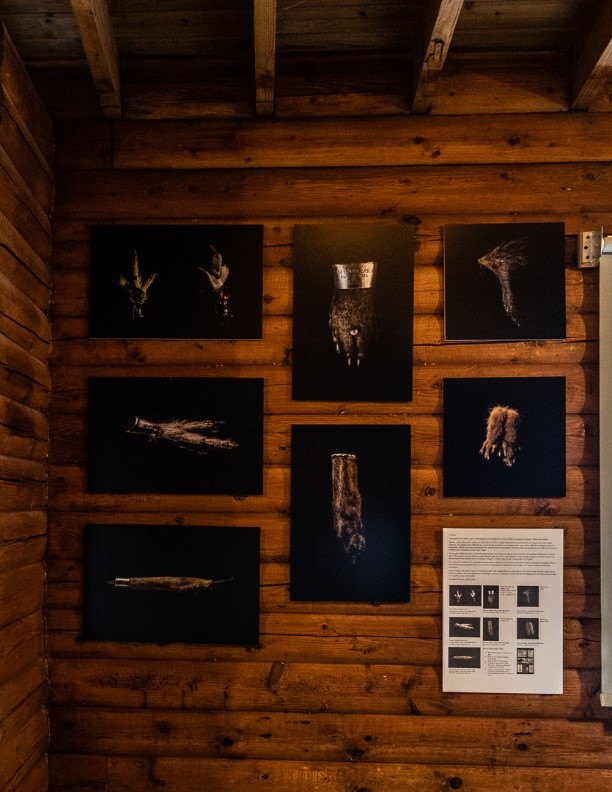Setting up the Installation Trophies was scheduled for the 18th May and as everything was ready the weekend before I took the opportunity to read Obrist: A Brief History of Curating. I find Obrist’s writing style to be very elegant and easily absorbed / considered. This book did not disappoint and his references to the pioneer Harald Szeemann sent me down another research route.
Szeemann, could most easily be described as a maverick – skilled in creating a spectacle from the unexpected or as in the case of his early museum work – beyond the traditional and accepted. After a brief sojourn in the theatre he entered the Art world at the Kunsthalle, Bern in Switzerland and became director in 1961. As he progressed, he curated a number of groundbreaking concepts including Jeanne-Claude’s first wrapped building (the Kunsthalle). He also hosted Warhol’s work in one of his first European appearances.
Szeemann’s ultimate but final Exhibition at the Kunsthalle was : “Live in Your Head: When Attitudes Become Form,” A European Survey of Conceptual art. This was a controversial show – headlined by artists who were not there, deliberate destruction of parts of the Kunsthalle and tainted by the odour of animal effluence introduced by disaffected local artists. Subsequently he became an independent curator offering an approach that mixed artefact and art.
Szeemann in his interview with Obrist (2008/ 122) confirms that he
‘Often turned to non-traditional exhibition spaces. ‘Grandfather’ was done in a private apartment and Monte Veritàin five locations never before used for art—including a theosophical villa, an ex-theatre, and a gymnasium in Ascona……At the same time, I looked for spaces that would be an adventure for the artists.’
Szeemann goes on to discuss his other show with Obrist mentioning Austria im Rosennetz. which had particular resonance for me because:
The entrance hall is a kind of Wunderkammer with Turkish relics and Hans Hollein’s couch from 19 Berggasse, where Freud practised psychoanalysis. (2008/124)
None of this felt very different from what I was about to do that morning albeit on a much smaller provincial scale. And as I travelled I realised that I done / was doing all the things that Szeemann described, as the facets of the curators job: simultaneously archivist, conservator, art handler, press officer, accountant, and above all, accomplice of the artists (Obrist. 2008/99)
Accomplice of the artist – here I took on a double role – curator and photographer (artist) – it was easy to swap between roles – almost like putting on a different coat – often defined by the harshest of critiques – myself
Accountant – Spread sheet to the ready – the budget wasn’t finite and as the black figure got lower I had to become more creative
Archivist and Conservator – Conservator defined as
a person responsible for the repair and preservation of things of cultural or environmental interest, such as buildings or works of art
I see this as a combined role in this instance: Documenting everything in my CRJ and extracts in my CRoP. Managing my University File system of images and thinking about where they will go at the end of the course – accessible but safe – they feel like a completely different body of work.
Art Handler – ensuring that the images/ collection are safely handled and cared for. The former has meant careful wrapping for transportation in acid free paper and labelled bags – Installation with gloved hands and consideration for non-destructive fixings for the surfaces of someone else’s building not designed as gallery. The latter has been a concern all the way through, whilst the collection lives in boxes and latterly a cabinet – photographing them has been an exercise in ingenuity
Press Officer – designing my own marketing / dissemination plan and looking for publicity opportunities. I would really rather someone else did this but I also worry about the sensitivity of the subject and the site.
The installation was in place by lunchtime – not without the odd surprise, the log walls were not even and the light was problematic for the installation shots. The pre- work was worth the time invested, Term 6 FMP: Week 7 Diary:and the small issues were easily solved.

Left Hand Wall of Trophies – WWW Washington Café – 2019
My worries ebbed away and a rare feeling of contentment took its place , when the Centre Manager (after looking at the work) asked if it could be retained for eleven weeks instead of the agreed two so that it would be in place for key footfall dates such as Easter and the Bank holidays
Bibliography
Birnbaum,D. Cherix, C. Obrist HU. Hans Ulrich Obrist: A Brief History of Curating (Documents) 2008
Conservator Definition available at https://en.wikipedia.org/wiki/Conservator {accessed 21/03/2018)